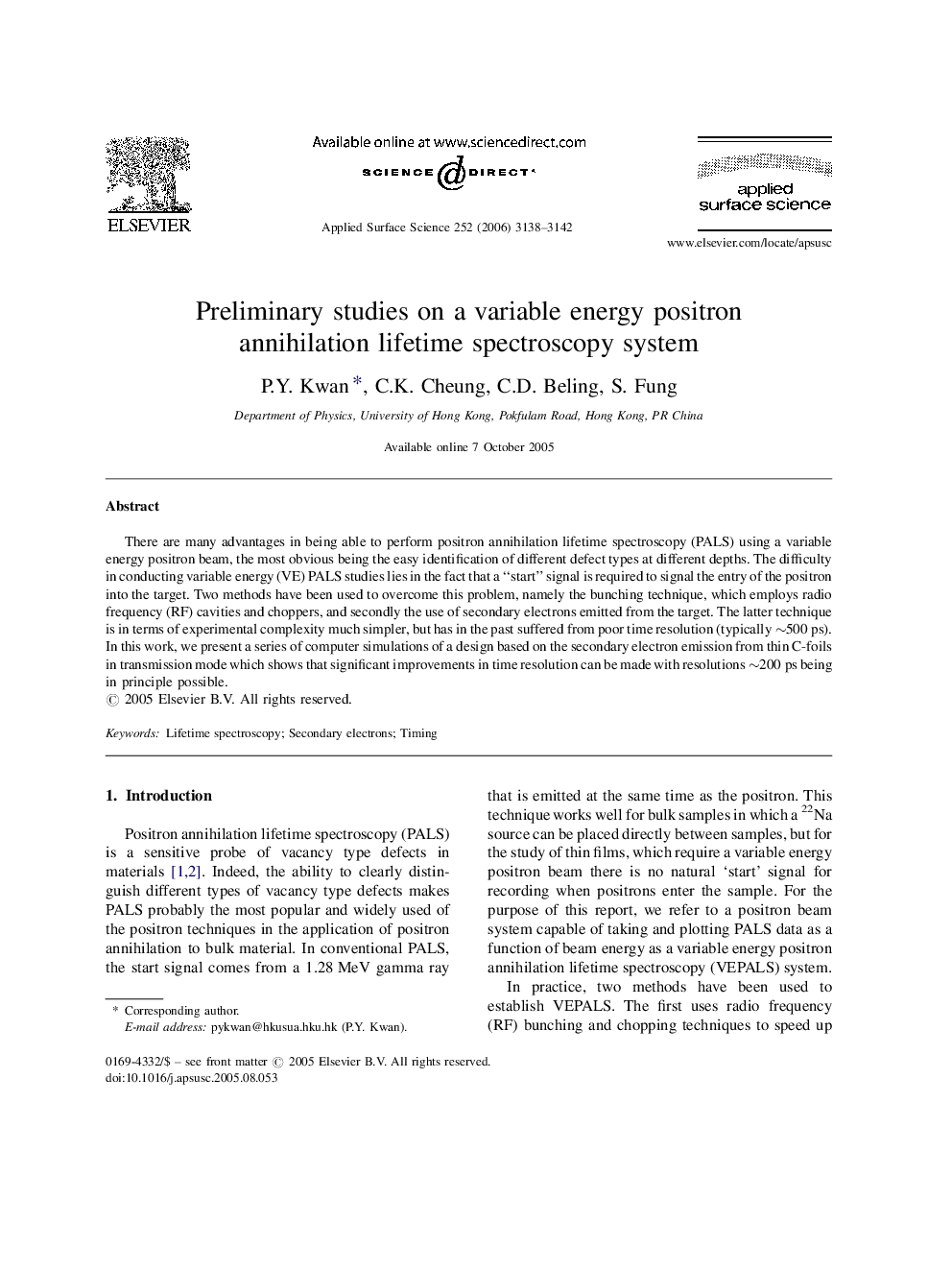| Article ID | Journal | Published Year | Pages | File Type |
|---|---|---|---|---|
| 5366929 | Applied Surface Science | 2006 | 5 Pages |
Abstract
There are many advantages in being able to perform positron annihilation lifetime spectroscopy (PALS) using a variable energy positron beam, the most obvious being the easy identification of different defect types at different depths. The difficulty in conducting variable energy (VE) PALS studies lies in the fact that a “start” signal is required to signal the entry of the positron into the target. Two methods have been used to overcome this problem, namely the bunching technique, which employs radio frequency (RF) cavities and choppers, and secondly the use of secondary electrons emitted from the target. The latter technique is in terms of experimental complexity much simpler, but has in the past suffered from poor time resolution (typically â¼500Â ps). In this work, we present a series of computer simulations of a design based on the secondary electron emission from thin C-foils in transmission mode which shows that significant improvements in time resolution can be made with resolutions â¼200Â ps being in principle possible.
Related Topics
Physical Sciences and Engineering
Chemistry
Physical and Theoretical Chemistry
Authors
P.Y. Kwan, C.K. Cheung, C.D. Beling, S. Fung,
